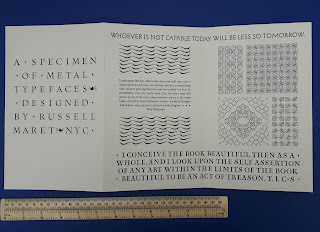Vivian Ridler, Diary of a Master Printer. A year in the life of the Printer to the University, Oxford. Edited and introduced by Colin Ridler. Oxford: The Perpetua Press. Forthcoming April 2022.
234 x 156 mm. Pp. 304. 16pp. plates. Set in Adobe Caslon and
printed in two colours. Sewn hardback, head and tail bands, ribbon register. D.w.
£25
With a Foreword by John Randle.
From the prospectus:
‘In 1970 one of Oxford’s great institutions, Oxford University
Press, was in crisis – beset by financial woes, management infighting,
industrial strife and a technological revolution. This previously unpublished,
vivid diary gives a no-holds-barred insider’s account of a critical year.
Vivian Ridler, as Printer to the University, was at the heart of a major part
of the business, the Printing House…he writes candidly of the challenges he
faces from powerful unions and ever more demanding publishing colleagues. His
acute and often humorous observations bring the story alive. And as a man of
wide interests and tastes he meets leading figures: Philip Larkin, Helen
Gardner and Michael Holroyd from the world of literature, great typographers
like Brooke Crutchley, Will Carter and Berthold Wolpe, historians like Alan
Bullock and Robert Blake, heads of Oxford colleges and the Bodleian,
politicians and captains of industry. As a board director he gives frank advice
to the Oxford Playhouse and Oxford Polytechnic. He makes elaborate 8mm films,
watches a Peter Brooke production at Stratford where the director ‘wrestles
with one Bill Shakespeare’, and celebrates the first night of Elizabeth
Maconchy’s opera The Jesse Tree, with a libretto by his wife Anne. With an
extensive introduction and footnotes provided by the Editor, the diary will be
of interest to anyone who loves Oxford and its rich past, or seeks to learn
about or be reminded of a bygone and pivotal era.’



















































